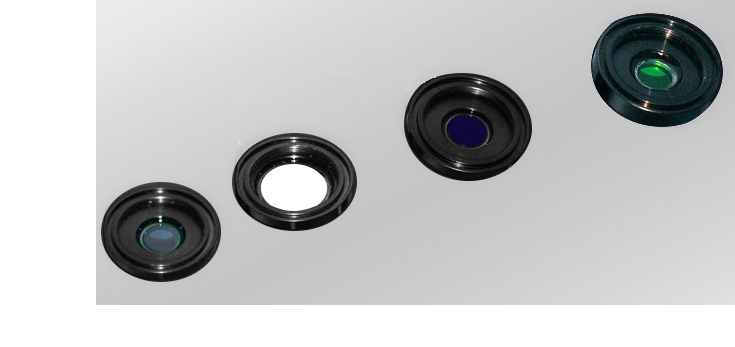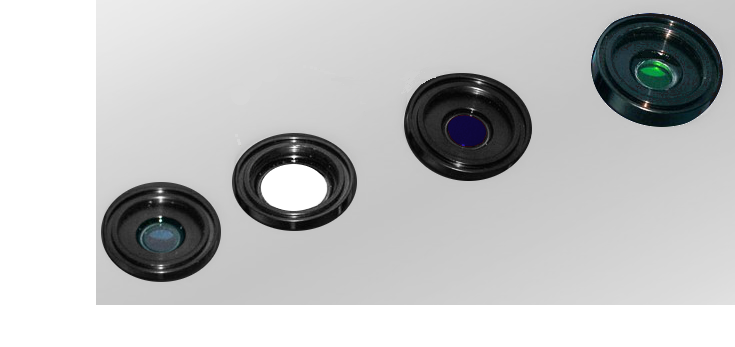光学滤光片
Optical filters are often used to attenuate certain wavelengths of light and produce an overall desired detector response.
Interference filters rely on harmonic interference between
waves to provide very narrow passbands. Thin metal films are spaced half
the desired wavelength apart by a dielectric spacer. Interference
filters are capable of bandwidths less than 10nm.
Absorptive filters typically consist of glass that has been doped
with a concentration of dye that absorbs particular colors. Since
spectral transmission varies logarithmically with thickness, the band
pass can be reduced by thickening the filter.
Bouguer's law describes the effect of thickness on transmission: log10(τ1) / d1 = log10(τ2) / d2,
where t is the internal transmittance, and the thickness, for two
filters made from the same material. Internal transmittance is greater
than external transmittance due to reflection losses.
Fresnel's law of reflection states that the fraction of light reflected for normal incidence is: r = (n-1)2 / (n+1)2,
where n is the ratio of the refractive indexes of the two media. If n =
1.5 for air and glass, then r = 4% for each surface. Two filters
separated by air transmit 8% less than two connected by optical cement
(or even water).
Multiple color filters can be layered to match a desired function,
such as the CIE photopic response, which defines the eye's sensitivity
to color. The combined spectral response is the product of the filter's
transmission and the spectral responsivity of the detector doped with a
concentration of dye that absorbs particular colors. Since spectral
transmission varies logarithmically with thickness, the band pass can be
reduced by thickening the filter.
ILT's optical filters are the building blocks that enable our meters
to be used in a vast array of applications. Mounted in threaded (1
1/4-24 thread) black anodized rings, all filters may be repeatedly
interchanged on any SED, SEL, and SHD detector. Unmounted filters and
empty filter rings are also available.
ILT can also create weighted measurement functions for applications such as the new UV Actinic Hazard standard, where UV exposure at a critical wavelength has a proportionally greater effect (as defined by ACGIH, NIOSH) than exposure at nearby wavelengths. ILT weights the sensitivity at each wavelength using thin film techniques or composite absorptive layering to accurately indicate exposure levels in a single measurement. Please contact us using the form below for technical assistance.



